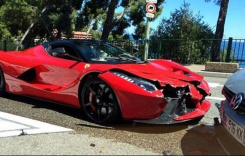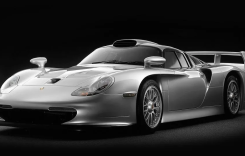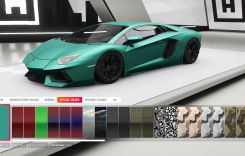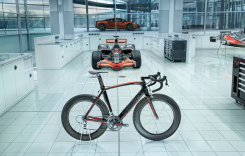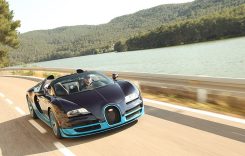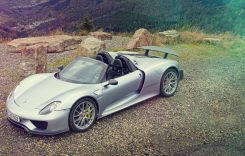
The Indian Roadmaster was the most luxurious model in the American motorcycle manufacturer’s line back in the 1940s. Indian has revived the Roadmaster moniker some 70 years later, expanding it’s current line-up and creating the most comfortable and touring-capable Indian motorcycle yet. Indian invited us to Wyoming, Minnesota weeks before the Roadmaster would be announced at the Polaris Dealer meeting for two days of riding its newest tourer.
Built on the bones of the Chieftain, the Roadmaster’s touring prowess is boosted by enhanced storage, heated seats and more protection from the elements. It would be easy to mistake this new machine for an accessorized Chieftain bagger, and that’s not far from the truth. In fact, those that already own a Chieftain can create a 99% Roadmaster from the Indian parts catalog.

The most obvious addition is the remote locking trunk adorned with a Desert Tan backrest. Its 17-gallon capacity is large enough to hold two full-face helmets and is nicely finished inside with an LED light, a 12-volt power port and carpet lining. The top also opens wide to ease adding and removing cargo. Another slick feature is how easy it is to remove the trunk, which can be done in just three steps. One – unplug the wiring harness powering the trunk taillight, 12-volt plug and LED cargo light. Two – Open the saddlebags and disconnect the trunk mounting points. Three – remove the trunk. It’s also nice that the trunk’s wiring harness tucks away inside the rear seat for a clean rear fender when the trunk is off.
Additional storage in the saddlebags, front cowl and lower fairings bring total capacity to 37.6 gallons, and all of it is handy. The 1.2-gallon compartments in each of the lower fairings are large enough to hold a pair of gloves, hats or even a large water bottle.
(Above) The most obvious addition is the remote locking trunk adorned with a Desert Tan backrest. (Middle) The remote locking trunk’s 17-gallon capacity is large enough to hold two full-face helmets and is nicely finished inside with an LED light, a 12-volt power port and carpet lining. (Below) The new Horizon windscreen shares the same electric height adjustment with the Chieftain, but the shape has been modified to create a bigger bubble for the rider and passenger.
Storage is important when touring but comfort is paramount, and Indian added more than a few creature comforts to the ride. The new Desert Tan seat has more padding than the Chieftain’s unit and features high and low heat. The additional padding also adds a half-inch of seat height for more leg room. After two moderately short days in the saddle I have no complaints from my rear end.
Airflow management is also an important touring factor and the engineers at Indian have done their job well. The new Horizon windscreen shares the same electric height adjustment with the Chieftain, but the shape has been modified to create a bigger bubble for the rider and passenger. The screen is actually shorter by three-quarters of an inch but is wider at the corners. This allows the rider to look over the windscreen in the lowest position while still keeping wind off of the body. At its tallest the air flowed right over my 5’ 10” frame, providing a turbulence-free ride. I alternated between the two positions often depending on the temperature and amount of rainfall, but for most conditions I went low to avoid looking through the screen whenever possible, a totally personal preference.
The temperature on our ride varied greatly from muggy summer day heat nearing 90 degrees to a chilly 62 during the morning blast back to the Wyoming HQ. This gave me time to really experiment with the vents and wind deflectors on the lower fairings. When we began the ride I opened the vents and tucked away the wind deflectors, both of which are easy to flip into their desired position while riding once you feel where they are located. We’re certain Indian would rather have you stop to make the adjustments for safety’s sake, however. I found the amount of air more than acceptable for the warm day, but if the mercury rises to triple digits, three bolts can be removed to ditch the entire lower for even more airflow. When the temps dropped and the rain fell, I gladly flicked the vents closed and the clear deflector out to keep my legs dry and warm. Overall it is a highly effective system.
On that cool morning I also sampled the 10-positon grip heaters and the high and low setting of the seat. Toggling trough the grip heater levels is simple via a button on the tank’s center console. Level 10 is nearly smoldering and Level 1 is just above ambient, so the range is excellent. Activating the seat heaters is not quite as slick, with a somewhat cheap-feeling toggle switch for each passenger tucked near the rear of the seat on the left side. Down for low, up for high and center for off. While the execution might be not be to the levels of the rest of the Roadmaster, the heat was welcome and worked well with the high setting getting me toasty in very short order.
The stereo system is the same as the Chieftain with additional speakers at the rear. Connectivity is achieved with Bluetooth or through a USB cable tucked inside a somewhat hidden compartment on the lower right of the cowl. Controlling my iPhone 5 was flawless, although the sound was just OK. Like any motorcycle sound system, wind noise and small speakers make for a sound that’s great at low speed but becomes flat and tin-ish when above 45 mph. It’s better than most but still less than optimal for true audiophiles.

From the front the Roadmaster and Cheiftain sport the same three-light configurations, but the Roadmaster is fitted with an LED headlight and fog lights, a set-up dubbed the Pathfinder. Although we did not get a chance to ride after the sun set, it is clear the Pathfinder LEDs crank out a much brighter and whiter light than the Chieftain’s incandescent lighting.
With all the bases covered for touring comfort, all that’s left is the ride itself, and the Roadmaster has that down pat. With the same chassis as the Chieftain, a steeper rake and shorter wheelbase the primary differences, the Roadmaster’s handling is quicker than the Chief. Turning effort is minimal at any speed and the feel lighter than the 899-pound dry weight would suggest. Busting down the highway, straight-line stability is superb and when the road goes ‘round the bend it is just as solid. And it can boogie when asked, with ample ground clearance for getting down in the turns.
Suspension action is plush from the 46mm front fork and air-adjustable rear shock, soaking up the less than perfect pavement nicely. If I had to nit-pick, I’d say the front rebound damping is a tad too quick, giving the front a slightly bouncy ride on choppy road surfaces, but overall the ride is what a touring machine should be.

What is there to say about the Thunder Stroke 111 powering the Roadmaster that hasn’t already been said? It’s a wonderful powerplant with character above and beyond most modern V-Twins. While the sound and torque is meaty the engine is very smooth at speed. And it’s one of the best looking engines in any frame.
The Roadmaster is available in three colors: Thunder Black ($26,99), Indian Motorcycle Red ($27,999) and Indian Motorcycle Red with Ivory Cream ($28,199), and each is spec’ed identical save for the color pigment.
So just as the reintroduction of Indian did justice to the heritage of the brand, the Roadmaster’s return absolutely does justice to the moniker. The comfort and convenience features set it above all others in the line and its performance and ride quality make it an excellent performer in the V-Twin touring segment. It looks damn good to boot.

